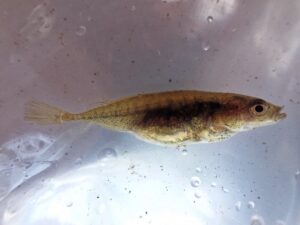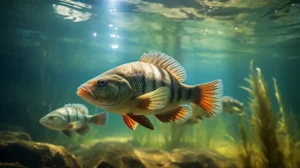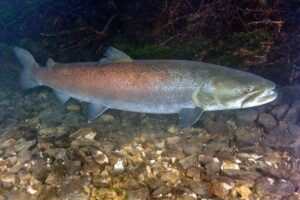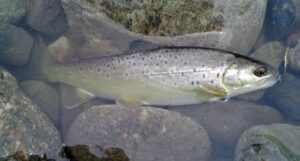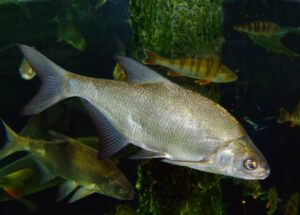Bottom feeder: Common Carp (Cyprinus carpio) – a popular and versatile aquatic fish
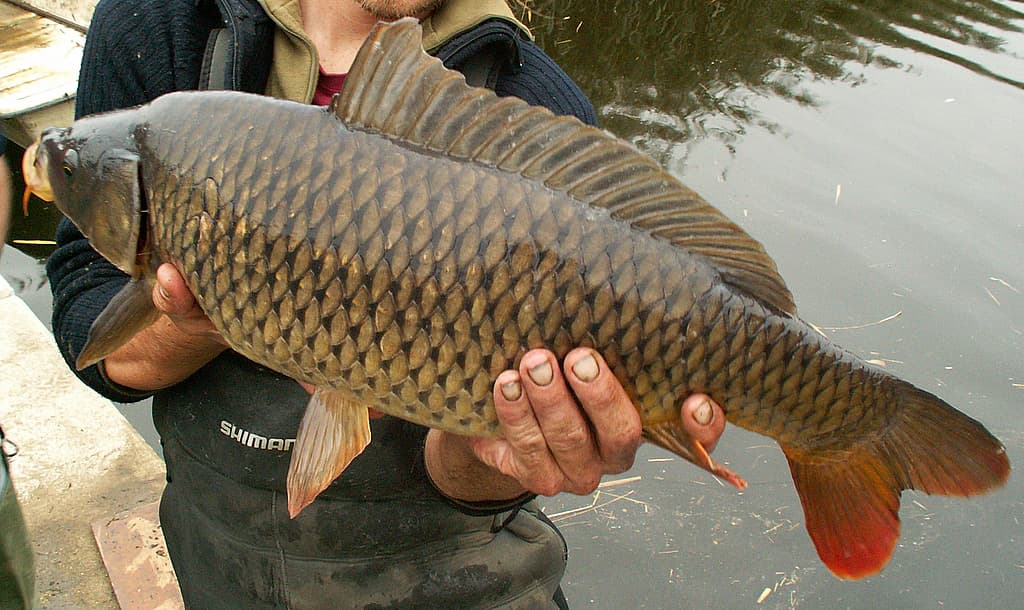
The Common Carp fish (Cyprinus carpio), an iconic freshwater fish, enjoys popularity among both anglers and in popular culture.
Often featured in media, it symbolises the royal cyprinid. Found worldwide, the Common Carp fish thrives in artificial ponds and natural lakes and ponds, where it’s highly prized for sport fishing. Its culinary value is also recognised in various cultures.

What is a Common Carp (Cyprinus carpio) ?
The Common Carp fish is a large freshwater fish known for its resilience and diverse diet. Bred for sport fishing, it is famous for its fighting spirit and impressive growth potential.
Morphological Characteristics of the Common Carp fish
Identifying Features of the Common Carp fish
The distinctive morphology of the Common Carp fish, with its elongated body and scales, makes it easily identifiable. Its characteristic barbels and protractile mouth highlight its adaptation to a bentophagous diet.
The Common Carp fish has an elongated, high-bodied shape with a humped and laterally compressed back. Its head and eyes are of medium size, and the mouth is slightly downturned and protractile, indicative of its bentophagous feeding behaviour. The Carp’s lips are thick, and the upper lip features four barbels (2 short and two long) with no buccal but pharyngeal teeth.
The Carp boasts a long dorsal fin with a wavy upper edge, with the first ray of this fin being serrated and devoid of spines. The caudal fin is strongly developed with a notched posterior edge. Typically golden, the Carp has a dark back ranging from greenish to brownish and a white to yellowish abdomen.
Taxonomy of the Common Carp (Cyprinus carpio)
| Class |
| Actinopterygii |
| Order |
| Cypriniformes |
| Family |
| Cyprinidae |
| Genus |
| Cyprinus |
| Species |
| C. carpio |
| Binomial Name |
| Cyprinus carpio (Linnaeus, 1758) |
Measuring the Size and Lifespan of the Common Carp Fish
The Common Carp Fish usually measures 40 to 60 cm in length and weighs between 4 and 10 kg. The largest recorded Carp reached 120 cm in length, with a maximum weight (current world record) of 48 kg.
The average Common Carp’s lifespan is around 20 years, with a maximum reported age of 38.
Exploring the Habitat and Behavior of the Common Carp Fish
Natural Habitats and Distribution of the Common Carp Fish
The Common Carp Fish are found in freshwater environments across Europe, Asia, the Far East, and North America. They prefer nutrient-rich aquatic habitats, adapting to various climates and aquatic environments.
Originally from Asia, Common Carp Fish has spread to diverse ecosystems, adapting to still and vegetation-rich waters, except in the coldest regions. They are commonly found in calm rivers, shallow lakes, and slow canals.
Dietary Habits and Reproduction of the Common Carp Fish
As omnivores, Common Carp Fish prefer insects, molluscs, and crustaceans. Their feeding activity varies with the seasons and environmental conditions. When available, they enjoy insect larvae, molluscs, worms, small crustaceans, and crayfish. Their feeding activity is mainly crepuscular and nocturnal, slowing down during winter.
Common Carp breed in late spring to mid-summer when water temperatures exceed 20°C. Females lay thousands (sometimes millions) of eggs adhering to the substrate and vegetation in shallow areas. The eggs incubate for about a week before hatching. Young Carp increase, reaching 15 cm in the first year and approximately 10 cm annually after that.
The Common Carp Fish in Sport and Gastronomy
For anglers, the Common Carp fish provides a thrilling sport known for its powerful resistance and rapid growth potential. This leads to capturing relatively large sizes and enhancing the excitement of the catch. In some regions, young carp between 20 and 30 cm are used as bait for targeting giant catfish, a proven successful method.
In aquaculture, Common Carp fish are prized for their rapid growth and ease of cultivation, often used in ponds optimised to promote their development and resilience.
The Common Carp is significant in gastronomic culture, particularly in Asia, where it’s an essential ingredient in numerous traditional dishes.
Effective Techniques for Carp Fishing
Carp fishing requires specific methods, including natural baits and techniques suited for night fishing. Carp anglers often prefer tranquil spots where Carp, due to their benthic behaviour, are more accessible.
Cultural Significance and Conservation of the Common Carp Fish
The phrase “mute as a Carp” reflects the cultural impact of this fish, meaning a person is entirely silent and uncommunicative.
The Common Carp Fish is classified as “Vulnerable” globally on the IUCN Red List but is considered “Least Concern” in Europe. Its status as an invasive species in some regions calls for careful environmental management to balance its presence in non-native ecosystems.


